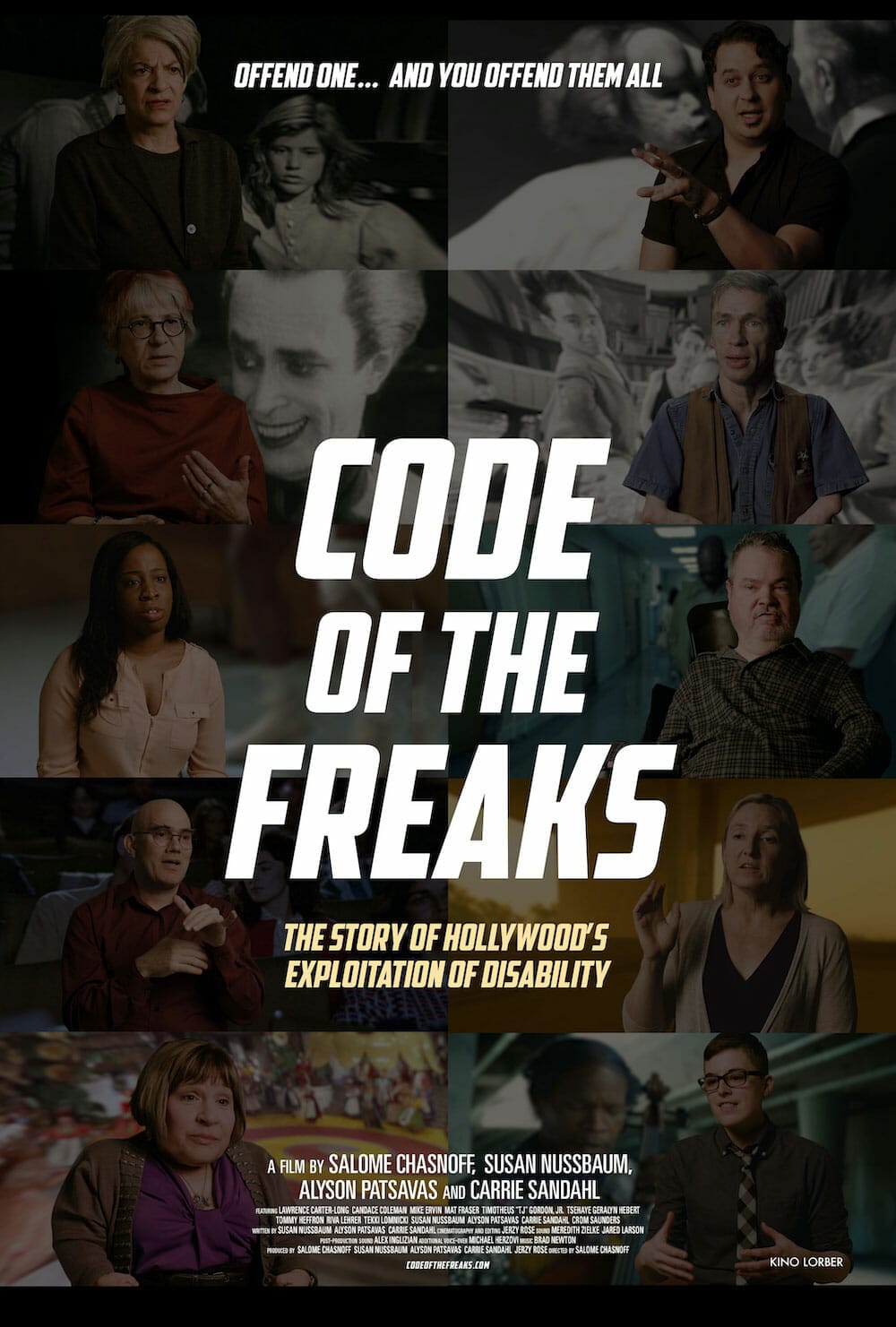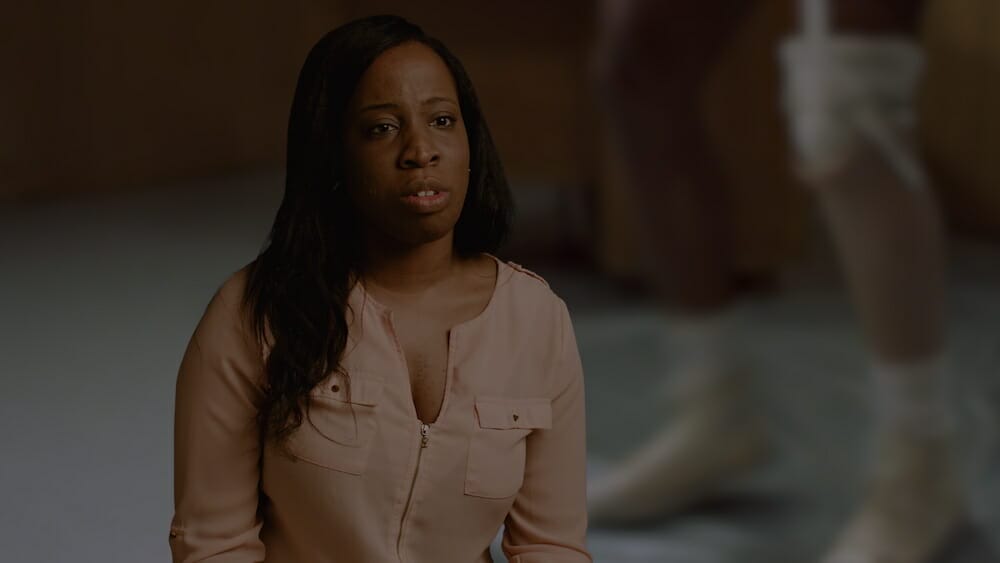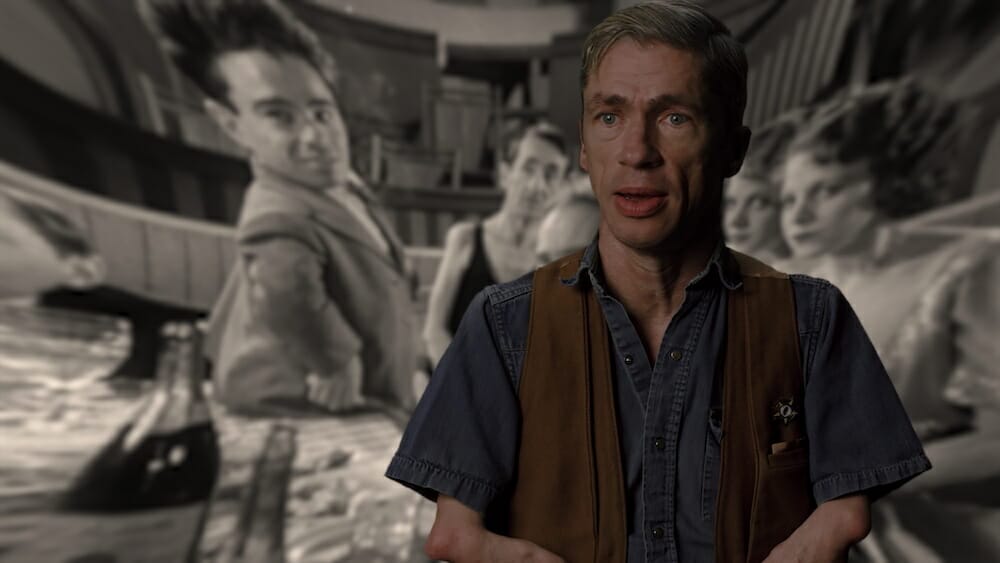A uniformed man in a crudely designed, steampunk wheelchair with grotesque steel arms and legs crawls toward a young man in a suit in Wild Wild West (1999)...
A man holds a gun to another’s face, one side of his face is perfectly unflawed, the other side shows gaping uncovered muscle in The Dark Knight (2008)…
Captain Hook waves his menacing hook with a mad gaze in his eyes in Hook (1991)…
As these films and more flicker one after the other, Lawrence Carter-Long, activist and media enthusiast, recounts the progress, or lack thereof, film has made in portraying people with disabilities. Carter-Long states what the film snippets say, in Code of the Freaks, “evildoers must be ugly” as “what we see has a tendency to repeat itself.” In film, we see villains with a disfigured face, a mental disorder, missing body parts. Disfigurement is ugly and ugly is evil. Even in movies with acclaim, disability remains purely evil, and not something inherently human.
In Code of the Freaks, scholars, activists, filmmakers, and actors speak to us with urgency, detailing the difficulty to watch a film in which people with disabilities are portrayed respectfully, truthfully, and, above all else, realistically. Forrest Gump sits on a bench with a box of chocolates in his lap, turning to face a woman sitting next to him. A man watches with pity and sorrow in his eyes as doctors in white coats attend to a young woman, adjusting breathing tubes and medical equipment surrounding her. An elaborately dressed Christine Daae, with a gleam in her eye, rips off the mask of the Phantom of the Opera much to his anger, leaving Christine in horror at his disfigured face. These films, while they have standing in cinema, do a disservice to those with disabilities and close the curtain to what it’s truly like with a disability, the film’s narrator reminds.
Code of the Freaks Explores Gender and Race Add-Ons to Disability Stereotypes
We see Audrey Hepburn’s character, a recently blinded woman in Wait Until Dark (1967), shake off a man who had jumped out from the darkness and attached himself to her foot. Uma Thurman’s character, a woman who is blind in Jennifer 8 (1992), reaches for an object off-camera, but before she finds it, a figure lashes out and grabs her wrist, throwing her off-balance. As a complement to these film clips, Alyson Patsavas, a scholar and writer of the documentary, criticizes these films, among others, as they mirror real world norms of inaccurate and disproportionate expectations of gender and disability. Tsehaye Hebert, a writer, describes race in film as Michael Clarke Duncan’s John Coffey, in The Green Mile (1999), reaches through the bars of his jail cell, eyes bloodshot and tears running down his face, as Tom Hanks’ Paul Edgecomb looks on in pity. Code of Freaks makes the point that, like gender, when disability connects to race, the stereotypes are compounded.
At the end of the film, while speakers in Code of the Freaks agree there have been disappointing attempts by filmmakers to portray people with disabilities realistically, there is still room for potential. As a call for change, Mat Fraser asks filmmakers to “help us be real”.
Code of the Freaks is a good documentary for anyone interested in film and the holistic approach to viewing film through a race, gender, and a disability-oriented lens.
RECOMMENDED
Nominate this for The Picture This Post BEST OF 2020???
Click Readers' Choice
Vote Securely! Vote Privately! And Make Your Vote Count-- as all voting should be!!
Length: 69 minutes
Director: Salome Chasnoff
Writers: Susan Nussbaum, Alyson Patsavas, Carrie Sandahl
Cast: Lawrence Carter-Long, Candace Coleman, Mike Ervin, Mat Fraser, Timotheus Gordon, Jr., Tsehaye Geralyn Hebert, Tekki Lomnicki, Crom Saunders, Rive Lehrer, Tommy Heffron
For more information on the film and where to screen visit the Code of Freaks website.
Images courtesy of kinonow.com.

About the Author: Annabelle Harsch
Annabelle has perpetual graphite smears on her hands from stories she wrote. She’s written about secrets and regret, but her favorite things to write about are love and dragons, good or bad. When Annabelle isn’t reading and writing, she’s usually hiking or buying plants and books.





